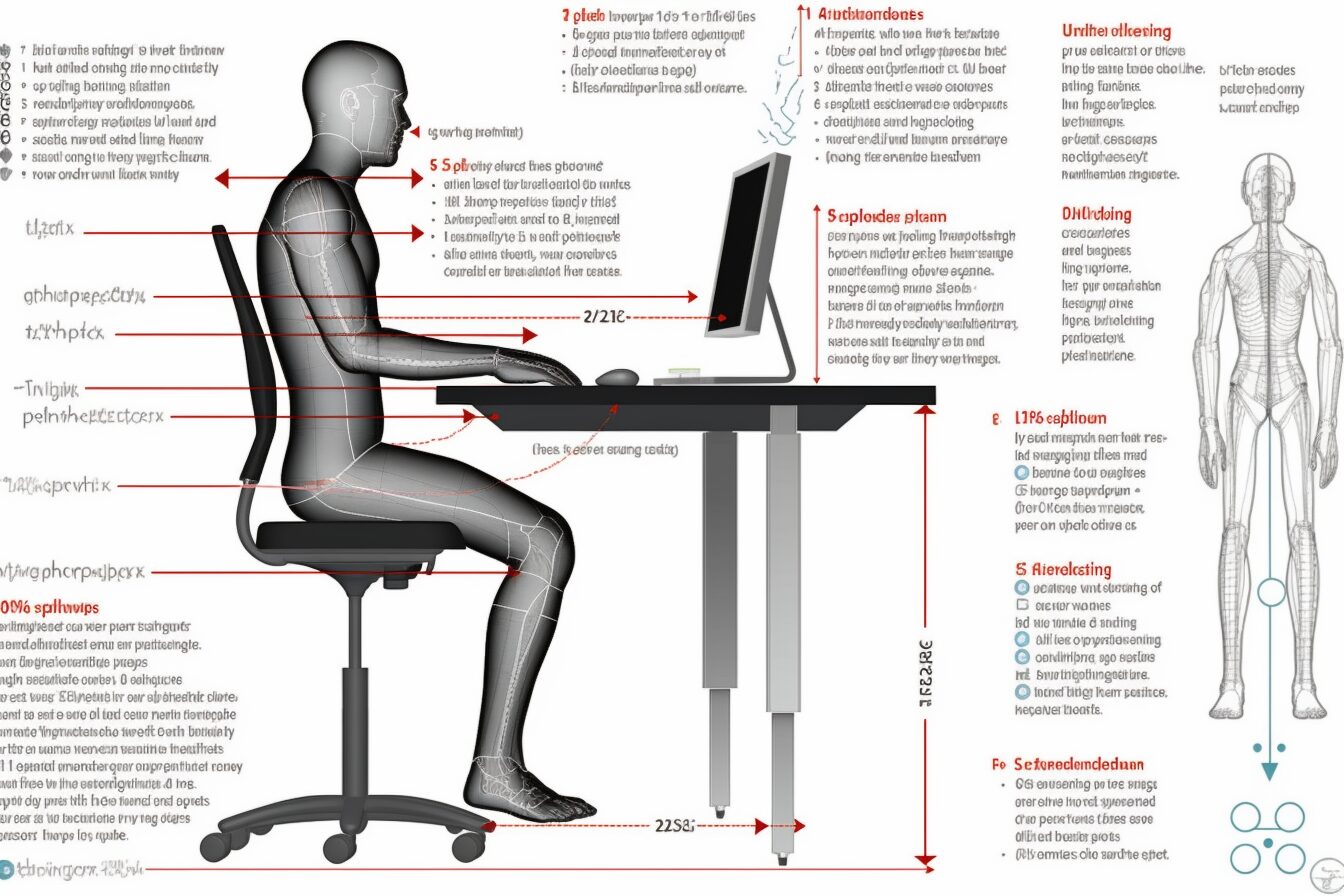How Do Chiropractors Know Where to Adjust? - A Full Guide
Picture this: you've just walked into a chiropractor's office, carrying the weight of chronic back pain on your shoulders. The question "how do chiropractors know where to adjust" is likely dancing in your mind as you hope for relief. Chiropractors are like detectives of discomfort; they start by combing through your medical history, searching for clues about what’s causing pain and how best to treat it.
Their expertise extends beyond simple conversation; these pros dive deep with hands-on techniques—think palpation and range-of-motion testing—to unlock secrets hidden within your body's alignment. And if there's one thing patients report after a session? It’s feeling lighter, both physically and mentally.
You're in good company too—with millions turning to these healing hands annually because when done right, adjustments work wonders. Stick around here—you'll get the inside scoop on how experienced chiropractors spot trouble spots that even medical experts might miss and set you up for an effective treatment plan.
The Initial Consultation and Medical History Review

Imagine stepping into a chiropractor's office for the first time. You're not just another number; you're about to receive care as unique as your spine. Over 35 million Americans turn to chiropractic care each year, and with that kind of trust comes an individualized assessment critical to kick-starting the healing process.
Gathering Comprehensive Health Information
Your journey toward pain relief begins with a thorough medical history review—think of it like Sherlock Holmes investigating all those health hiccups from the past to the present. Experienced chiropractors dig deep because they know every detail matters—from that fall off your bike when you were five, right up through last week's car accident, or lingering chronic pain.
A meticulous inventory of your health experiences gives them clues on how best to help you. It's not about nosiness; it’s about nailing down the perfect treatment plan tailored just for you. And remember, what happens here at HB Chiropractic stays here at HB Chiropractic—it’s all confidential.
Understanding Your Symptoms
Symptoms are like breadcrumbs leading Hansel and Gretel to effective chiropractic adjustments. Telltale signs such as muscle tension can point towards trouble spots needing attention.
But symptoms aren't always shouty billboards; sometimes they’re subtle whispers hinting at deeper issues like herniated discs or degenerative disc disease irritating spinal nerves and causing pain. A savvy chiropractor uses these signals alongside diagnostic tools to identify areas ripe for adjustment and set out on a path back towards proper alignment—and ultimately, reducing stress levels along your nervous system highway.
The anatomy of the spine, its complex twists and turns play a huge role here too because let’s face it: understanding this intricate structure is vital when pinpointing what might be throwing off balance within the human body—the backbone (pun intended) of our physical well-being.
Key Takeaway:
At your first chiropractic visit, you'll get a tailor-made care plan based on a deep dive into your medical history and current symptoms. No cookie-cutter treatments here; every adjustment is customized to what your body tells us—through detailed X-rays, muscle assessments, and those little signs only experts catch.

Subscribe To Dr Mike's MVP Newsletter!
Exclusive content, interesting topics, real insights.

Diagnostic Tools and Imaging Techniques
When you think of chiropractic care, the first image that might pop into your head is a chiropractor's hands expertly finding their way to the trouble spots. But before those skilled hands start their work, advanced diagnostic tools come into play—specifically X-rays.
The Role of X-Ray in Chiropractic Diagnosis
X-ray images are like a treasure map for chiropractors; they reveal what lies beneath with astonishing clarity. These detailed views from X-rays are critical for assessing joint conditions accurately and safely. Imagine being able to look inside someone's back as easily as checking out your reflection—a bit less creepy than it sounds, but just as revealing. It’s these snapshots that let medical experts pinpoint areas needing adjustment without second-guessing.
We've all seen an action movie where the hero looks at some complex device screen showing them exactly where to go next—that's kind of what an experienced chiropractor does with X-ray images. By visualizing internal structures clearly, these imaging techniques allow for precision when it comes time to restore proper alignment.
Now picture this: every vertebra in your spine is stacked neatly like dishes in a cupboard—if one dish starts slipping out of place, you'd want to know about it before everything comes crashing down. That’s why utilizing X-ray images helps ensure nothing goes unnoticed during diagnosis or treatment planning.
Manual Assessment with Palpation Techniques
Moving on from high-tech gadgets to old-school methods—chiropractors also rely heavily on palpation techniques during physical examination methods. This is not much different from kneading dough until you find that pesky lump; only instead of making bread, we're trying to make sure everything in your body moves smoothly.
Palpation is common practice among chiropractors, who use their finely-tuned sense of touch—their very own superpower—to identify misalignments and painful areas by feeling abnormalities in muscle tone and tissue texture through both static palpation and motion palpation strategies.
Gone are the days when doctors had little more than intuition guiding them—today’s practitioners can assess factors such as joint movement directly against clinical findings provided by modern science so they can kickstart healing processes effectively while ensuring safety at each step along the way.
Key Takeaway:
X-rays are a chiropractor's treasure map, revealing hidden issues for precise adjustments. And just like kneading dough to find lumps, palpation lets them feel what's out of place—blending high-tech with hands-on expertise for top-notch care.
Palpation and Physical Examination Methods
When you walk into a chiropractor's office, they've got more than just an adjustment table. They're armed with skills to decode the secrets of your spine. Palpation is one such technique where their hands become human GPS systems, tracking down trouble spots hidden beneath skin and muscle.
Manual Assessment for Accurate Diagnosis
The art of palpation involves pressing on various parts of the body to feel for those sneaky subluxations that might be throwing off your groove. A skilled chiropractor can tell a lot about joint alignment by how tissue feels under their touch – whether it’s as tight as guitar strings or puffy like marshmallows.
You'll often hear patients report relief after these pros work their magic because, through touch alone, experienced chiropractors identify areas in need of attention based on abnormalities in muscle tone and texture differences.
Anatomy of the spine isn't just academic knowledge; it's critical for understanding what lies beneath the surface during palpation techniques. This intimate knowledge allows them to suss out even subtle misalignments or pesky knots causing pain without needing X-ray vision—though they might use actual X-rays too.
Detecting Subluxations Through Feel
Beyond identifying sore muscles, there’s something called static palpation which gets personal with your stationary body looking for asymmetries that shouldn’t be there—like if one shoulder looks like it’s trying to whisper a secret to your ear while the other stays put.
Moving right along from static comes motion palpation; this time checking how well each spinal segment plays nice with its neighbors when you move around. If one part moves like molasses while others are doing jazz hands—that could mean trouble ahead."
We’re not talking about some mysterious cracking sound here (although adjustments sometimes come with those); we’re diving deep into why manipulation techniques have people feeling all kinds of good afterward—it's because joint cavitation isn't just fun science words but also brings back lost movement freedom.
Pain issues don’t stand a chance when expert hands assess factors such as soft tissue condition, and muscle tension levels before ever adjusting—they make sure everything aligns so natural healing kicks into high gear thanks partly due increased blood flow wherever needed most.
In summary: Just think—a quick visit may reveal things you didn't even know were bugging you. From degenerative disc disease playing hide-and-seek between vertebrae discs hiding behind tough exterior facades (because let’s face it—the human body is complex), to finding that sweet spot where poor posture has set up camp unnoticed yet unforgivingly irritating spinal nerves. A thorough check-up can uncover these hidden ailments, leading to better health and comfort.
Key Takeaway:
Chiropractors use their hands like a human GPS to find trouble spots, feeling for tightness or puffiness that clues them into your body's needs. They've mastered the art of touch to pinpoint subluxations and knots without always needing X-rays, getting you back in action with improved blood flow and pain relief.
Assessing Posture and Gait Analysis

You might think a chiropractor's job is all about the spine, but there’s more to it. Your walk could be telling your chiropractor a story you didn't know you were sharing.
Decoding Body Mechanics
Musculoskeletal imbalances are often silent culprits behind pain and discomfort. But how do experienced chiropractors spot these sneaky issues? They watch you walk.
That's right – gait analysis isn’t just for Olympians. Observing walking patterns can shine a light on compensatory behaviors that might indicate spinal misalignments.
It's like watching detective work in action; each step could be leaving clues about musculoskeletal imbalances affecting movement patterns. A limp here or an uneven stride there can speak volumes to medical experts trained to read between the lines of your locomotion.
Gait evaluations have proven their worth by offering key insights into how various parts of our body interact during movement—think of them as informants divulging secrets on what’s going down with those joints and muscles when they think no one is looking.
If posture were an emoji, it would probably be that straight-backed attention stance we see before soldiers march off to battle—it needs to command respect. When analyzing posture, whether standing or sitting, every curve in the cervical spine and tilt in the pelvis has its own tale of potential trouble spots within our framework. It's not uncommon for people who've been through something as jarring as a car accident—or even from years of poor posture—to find themselves under scrutiny by hands seeking out hints across shoulders slouched from stress or hips thrown off-kilter by high heels.
Anatomy plays a crucial role because everything from muscle tone to blood flow hinges upon proper alignment—and where things go awry, adjustments may follow.
Gather 'round,
- Your body tells stories without uttering words—listen up.
- A well-aligned frame means smoother sailing (and less complaining) through life’s choppy waters.
- Spotting imbalance early leads us back onto firmer ground faster than ignoring signs until they scream at us loudly enough we cannot ignore them any longer—which nobody wants.
Range of Motion Testing
Imagine your body as a finely tuned machine. Just like any complex apparatus, it needs regular check-ups to ensure everything is moving smoothly and efficiently. That's where range of motion testing comes into play—a fundamental tool that chiropractors use to pinpoint those pesky joints with restricted movement.
Gauging Joint Function Assessment
The human body should move like a symphony—each part in perfect harmony with the others. But when there's trouble in the orchestra, say a violin out of tune (or in our case, a joint that’s not quite right), it throws off the entire performance. Range of motion testing acts much like our musical conductor, identifying which instruments—or joints—aren't playing their parts correctly.
This isn’t just about asking you to touch your toes or reach for the sky; it’s an intricate assessment used by chiropractors to understand every nuance of joint function within your unique condition. They’ll guide each affected area through its full dance routine—from twirls and spins (flexion and extension) to side steps (lateral bending) and pirouettes (rotation)—to see exactly where things get sticky.
Tuning Into Restricted Movement
A joint that can't move freely is like having gum stuck on your shoe—it's annoying, slows you down, and eventually affects how you walk altogether. When the range of motion tests reveal these limitations, they're often red flags indicating underlying issues such as muscle tension or even degenerative disc disease causing pain.
An experienced chiropractor feels for these hiccups during examination using both static palpation—the artful skill akin to reading Braille on the spine—and dynamic palpation techniques assessing movement while patients perform specific actions. It helps them detect whether poor posture from sitting at desks all day or old injuries from car accidents might be contributing factors.
Optimizing Treatment Plans With Precision
You'll find relief knowing this isn’t guesswork but rather meticulous detective work guided by medical experts trained extensively in understanding the secrets held within our musculoskeletal system—the ultimate roadmap leading towards natural healing processes.
Anatomy knowledge enhances their ability to spot irregularities quickly.
With over 35 million Americans turning towards chiropractic care annually seeking pain relief from chronic conditions—like those musicians needing fine-tuning before a big concert—chiropractors rely heavily on range of motion assessments because they provide clear insights into what areas need attention.
By using precise adjustments informed by thorough testing and tools like X-rays, we can realign each vertebra. This approach ensures treatments are tailored to individual needs for optimal health.
Key Takeaway:
Think of your chiropractor as a body detective, using range of motion tests to uncover clues about joint function and craft personalized treatment plans. They combine hands-on examination with medical know-how to find and fix the stiff spots that throw off your body's harmony.
FAQs in Relation to How Do Chiropractors Know Where to Adjust
What are red flags in chiropractic?
Sudden, severe pain post-adjustment or numbness and tingling can signal trouble. If symptoms worsen instead of improve, alert your chiro.
Is there any science behind chiropractic adjustment?
Absolutely. Studies show adjustments may relieve back pain by restoring joint function and supporting the nervous system's health.
Can a chiropractor tell if you are out of alignment?
A skilled chiro spots misalignments through exams and feels for irregularities during palpation—it's their bread and butter.
How far apart should chiropractic adjustments be?
Treatment plans vary—some need weekly sessions; others do well with less frequent visits. Your body's response dictates the pace.
Conclusion
Understanding how chiropractors know where to adjust starts at the initial consultation. Here, your medical history lights the way for a personalized treatment plan. X-rays and diagnostic tools sharpen that focus, pinpointing misalignments with precision.
Feel the difference as hands-on palpation techniques reveal subluxations hidden beneath muscle tension. Watch how posture tells its own story of imbalance, guiding adjustments that restore proper alignment.
Remember: every range-of-motion test has a purpose; it's finding those restricted movements begging for freedom. Millions have found relief through these methods because they work—they bring back motion and ease pain issues you've been carrying around.
You're set now—knowing what goes on before a chiropractor's healing touch gets to work can give you peace of mind and lead to better health outcomes. So let them unravel the mystery of discomfort in your body; trust in their trained hands as they guide you toward natural healing.
18600 Main St STE 110, Huntington Beach, CA 92648

Subscribe To Dr Mike's MVP Newsletter.
Get In Touch
(714) 794-2171
Office Hours
Monday-Thursday:
7:00 am - 11:00 am, 2:00 pm - 6:00 pm
Friday: Closed
Saturday: By Appointment Only
Sunday: Closed

(714) 794-2171
Subscribe To Dr Mike's MVP Newsletter.
Office Hours
Monday-Thursday:
7:00 am - 11:00 am, 2:00 pm - 6:00 pm
Friday: Closed
Saturday: By Appointment Only
Sunday: Closed
18600 Main St STE 110, Huntington Beach, CA 92648
Huntington Beach Chiropractic | Copyright ©2025 | Website by iTech Valet
